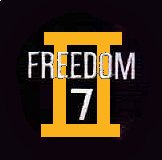Mercury-Atlas 10
| Mission type | Test flight |
|---|---|
| Operator | NASA |
| Mission duration | 3 days (planned) |
| Spacecraft properties | |
| Spacecraft | Mercury No.15 |
| Manufacturer | McDonnell Aircraft |
| Launch mass | ~1,490 kilograms (3,284 lb) |
| Crew | |
| Crew size | 1 |
| Members | Alan Shepard |
| Callsign | Freedom 7 II |
| Start of mission | |
| Launch date | 1963 (cancelled) |
| Rocket | Atlas LV-3B |
| Launch site | Cape Canaveral LC-14 |
 |
|
Mercury-Atlas 10 (MA-10) was a cancelled early manned space mission, which would have been the last flight in NASA's Mercury program. It was planned as a three-day extended mission, to launch in late 1963; the spacecraft, Freedom 7-II, would have been flown by Alan Shepard, a veteran of the suborbital Mercury-Redstone 3 mission in 1961. However, it was cancelled after the success of the one-day Mercury-Atlas 9 mission in May 1963, to allow NASA to focus its efforts on the more advanced two-man Gemini program.
Scheduling for the MA-10 mission began as early as mid-1961, before a single orbital flight had been flown. It was planned as a one-day orbital mission, using Spacecraft #15 and Atlas booster 144D. The - by now heavily modified - spacecraft #15A was delivered to Cape Canaveral on 16 November 1962, renumbered #15B in January 1963, and prepared for use as a backup spacecraft for MA-9; by this stage, NASA was noncomittal about whether or not a fifth orbital flight would be flown.
Shortly after the Mercury-Atlas 8 flight in October 1962, some commentators speculated on the possibility of MA-10 being flown as a "dual mission". In this approach, MA-10 and a new MA-11 flight, the latter using the MA-10 backup capsule, would be launched in close proximity, and fly a loosely co-ordinated mission, similar to the Soviet Vostok 3 and Vostok 4.
While in late 1962 the MA-10 mission had still been planned as a nominal one-day flight, as of early 1963, the tentative plan for the MA-10 mission anticipated it being around three days long. The mission was to be flown by Alan Shepard, the backup pilot for MA-9, then in preparation, and previously the pilot of the Mercury-Redstone 3 suborbital mission in 1961. In a nod to his earlier spacecraft, Shepard named #15B "Freedom 7-II".
The mission would have carried a re-entry communications experiment, which involved injecting water into the plasma sheath surrounding the spacecraft on reentry, in the hope that it would disrupt the sheath enough to allow radio communications; this was later flown on Gemini 3.
...
Wikipedia
